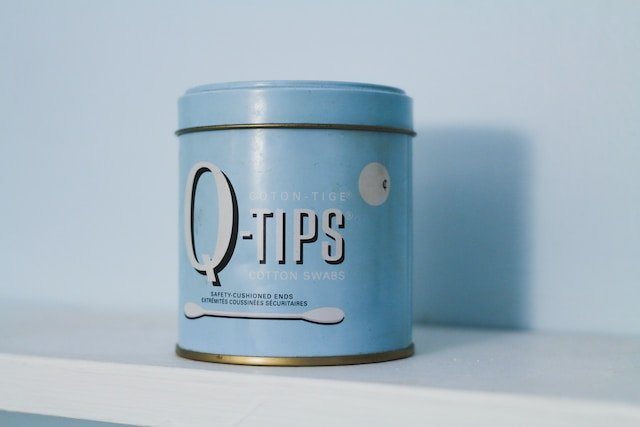In the quiet hours of the early morning, when the world is still and the hustle of daily life has yet to begin, many individuals find themselves awakened not by the sound of their alarms but by the sharp, stabbing pain in their heels. This pain, a hallmark of plantar fasciitis, is an unwelcome companion that can turn the simple act of getting out of bed into a daunting challenge. Plantar fasciitis, a condition characterized by inflammation of the plantar fascia—a thick band of tissue that runs across the bottom of your foot and connects your heel bone to your toes—has become increasingly prevalent, affecting both active individuals and those who stand for long periods. In this battle against discomfort, a night splint for plantar fasciitis emerge as a beacon of hope, offering relief and a path towards recovery.
Causes and Symptoms of Plantar Fasciitis
The causes of plantar fasciitis are varied, but they all involve excessive stress and strain on the plantar fascia. Some common causes include:
- Overpronation or an inward rolling of the foot
- Wearing improper footwear, such as shoes with poor arch support or high heels
- Increased physical activity or sudden weight gain, which puts extra pressure on the plantar fascia
- Certain exercises that put a lot of stress on the heel, such as running, jumping, or dancing
- The most common symptom of plantar fasciitis is heel pain, which can range from mild discomfort to severe pain. The pain is usually localized to the bottom of the heel and may extend along the arch of the foot. It is typically most intense in the morning, when the plantar fascia has been in a contracted position overnight, and may improve with walking and stretching. However, prolonged periods of walking or standing can exacerbate the pain. Other symptoms of plantar fasciitis may include swelling, inflammation, and tenderness in the heel area. If left untreated, plantar fasciitis can significantly impact your daily life and limit your ability to perform routine activities.

The Science Behind Night Splints for Plantar Fasciitis
Night splints are designed to stretch the plantar fascia and Achilles tendon overnight, which can help alleviate pain and promote healing. The logic behind their use is rooted in the principle of maintaining a gentle stretch on these tissues, preventing the contraction and stiffness that typically occur during sleep. By doing so, night splints can reduce the morning pain that many sufferers of plantar fasciitis experience.
Research supports the effectiveness of night splints. A study published in the Journal of Foot and Ankle Surgery found that patients who used night splints in conjunction with other treatments, such as stretching exercises and the use of orthotics, reported significant improvements in symptoms and functionality. The success rate of night splints, as reported in various studies, varies, but many show that a substantial percentage of users experience relief from their symptoms.
Different Types of Night Splints for Plantar Fasciitis
Exploring the realm of night splints further unveils two prominent types tailored for plantar fasciitis relief. The dorsal night splints, designed to hold the foot in a gentle dorsiflexion position during sleep, cater to improved Achilles tendonitis recovery. Meanwhile, boot style night splints provide a combination of compression and dorsiflexion, aiding in the treatment of plantar fasciitis by gently stretching the calf muscles while you rest. These variations offer diverse approaches to enhancing your comfort and recovery, showcasing the versatility within medical devices for foot ailments.
Dorsal Night Splints
Dorsal night splints keep the foot at a 90-degree angle, promoting effective stretching and preventing plantar flexion contractures. Adjustable for personal comfort, these splints are lightweight and comfortable for night wear, aiding in the treatment of plantar fasciitis. By maintaining dorsiflexion, they offer an effective way to relieve symptoms like Achilles tendonitis. The closure system with velcro ensures a secure fit without over-tightening. Users’ reviews on sites like Amazon highlight the efficacy of dorsal night splints for heel pain relief.
Boot Style Night Splints
Boot style night splints provide extensive support by covering the calf and foot. These splints are designed with a rigid shell to offer protection for severe plantar fasciitis conditions. Ensuring a comfortable all-night fit, they prevent foot drop with a polyethylene shell. Ideal for moderate to severe symptoms, boot style night splints are a reliable choice for comprehensive support during nighttime.

Choosing the Right Night Splint for Your Needs
When selecting a night splint for plantar fasciitis, consider factors like size, adjustability, and comfort. Understanding the closure system, whether it’s velcro or compression-based, is crucial. Different types of braces offer various levels of dorsiflexion and support for the heel bone and arch of the foot. Proper sizing is essential to ensure optimal effectiveness and comfort during wear. Customer service reviews and medical professional recommendations can guide you towards an effective treatment option.
Factors to Consider When Choosing a Night Splint
When selecting a night splint, comfort for extended wear is crucial. Opt for adjustable straps for a personalized fit that maintains the foot position. Choose a breathable material for comfort and support without discomfort.
Understanding Sizes and Adjustability
Proper sizing and adjustability play a vital role in the effectiveness of night splints. These medical devices come in various sizes tailored to different foot shapes. Adjustable options offer customization for maximum comfort, while sizing guides aid in choosing the right fit for optimal results. A well-fitted and adjustable night splint enhances both comfort and functionality, ensuring improved treatment for conditions like plantar fasciitis.
Maximizing the Effectiveness of Your Night Splint
To enhance the effectiveness of your night splint, consider these tips: ensure a snug fit for optimal results, gradually increase wear time for comfort, incorporate gentle stretching exercises to complement the splint’s benefits, and seek advice from healthcare professionals for personalized guidance. Embracing these practices can amplify the positive impact of your night splint on alleviating plantar fasciitis discomfort and supporting your heel health.

Tips for Wearing Your Night Splint
To enhance comfort, gradually increase the duration of wearing your night splint. Prevent skin irritation by wearing socks with the splint. Achieve a snug fit by adjusting the straps accordingly. If discomfort or pain arises, remove the splint promptly. Seek advice from your healthcare provider if you have any concerns about using the night splint effectively.
Complementary Therapies for Plantar Fasciitis Pain Relief
Enhance your plantar fasciitis pain relief by combining stretching exercises with your night splint routine. After wearing the night splint, try applying ice to the affected area for added comfort. Massage therapy can complement the effects of your night splint, optimizing your overall treatment plan. Consider using orthotic inserts in conjunction with your night splint for enhanced benefits. Physical therapy sessions can further boost the effectiveness of your night splint therapy, aiding in your recovery process.
Real-life Experiences with Night Splints
Experiencing plantar fasciitis can be challenging, but real-life stories of using night splints offer valuable insights. From the first night of wearing a splint to the gradual improvement in mobility, individuals share how this brace has been a game-changer in their healing journey. Exploring customer reviews and testimonials sheds light on the effectiveness of night splints in alleviating heel pain and promoting better foot health. These experiences highlight the role of night splints as a key component in the comprehensive treatment of plantar fasciitis.
What do Health Professionals Say About Night Splints?
Healthcare experts advocate the use of night splints for plantar fasciitis. Emphasizing adherence to usage instructions, professionals highlight the positive impact of incorporating night splints in treatment. Medical specialists endorse the efficacy of night splints, offering valuable insights into their therapeutic role.

What is the best sleeping position for plantar fasciitis?
For optimal relief from plantar fasciitis, the ideal sleeping position involves lying on your back with a pillow beneath your knees. Alternatively, sleeping on your side with a pillow between your knees can also alleviate pain. Avoid stomach sleeping to prevent strain on the foot arches. Experiment with positions for comfort.
Are night splints effective in reducing morning foot pain associated with plantar fasciitis?
Night splints are commonly used to alleviate morning foot pain linked to plantar fasciitis. By stretching the plantar fascia and Achilles tendon during sleep, they help diminish stiffness and discomfort upon waking. Consulting a healthcare provider for personalized guidance on night splint usage is recommended.
What is the recommended duration for wearing a night splint to see improvements in plantar fasciitis symptoms?
For optimal relief from plantar fasciitis, it’s advised to wear a night splint for 6-8 hours while sleeping. Consistent use over weeks can alleviate symptoms, with some experiencing relief in just a few weeks. Consult a healthcare professional for personalized guidance on duration.

Conclusion
Plantar fasciitis is a condition that can significantly impact one’s quality of life, transforming simple activities into challenging tasks. However, with the right approach, relief is within reach. Night splints represent a critical component of the treatment arsenal, offering a non-invasive solution that can alleviate pain and facilitate healing. As we continue to explore and understand the nuances of this condition, platforms like theheelgp.com play a crucial role in guiding individuals towards effective treatment options. In the journey towards recovery, every step forward is a victory. Could night splints be the missing piece in your recovery puzzle?
I hope you found this blog helpful and please feel free to comment and share.
Thanks for reading!
 | Tracy J. Founder, The heel GP |
